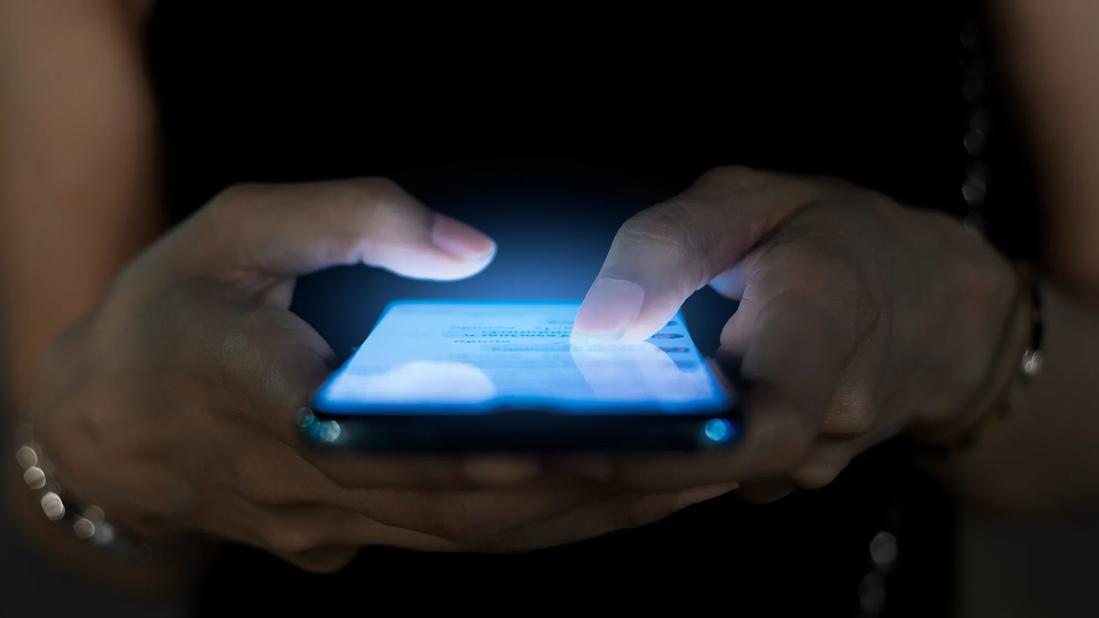The Digital Distress of Blue Light and Its Effect on Your Eyes
Too much blue light, especially from digital sources, may lead to eye strain and computer vision syndrome

We’ve all been exposed to blue light at one point or another. We get most of it from the sun. But as we’ve grown comfortable with technology in the digital age, our exposure to blue light has increased every time we look at a screen. Even the U.S. Department of Energy estimates that by 2035, the majority of lighting installations will use LED (light-emitting diode) technology bursting with blue light.
So, what does this mean for our eye health? Are we at risk of damaging our vision the more we rely on these technologies? Or is blue light safe for our eyes? Ophthalmologist Rishi Singh, MD, shines a light on these questions and more.
What is blue light?
Blue light is a segment of the visible light spectrum with a shorter wavelength and higher frequency than most other lights we can see. The shorter the wavelength, the higher the energy that’s released — so blue light has a more profound effect on the naked eye than other kinds of visible light. In fact, blue light is so strong that it’s almost as powerful as the ultraviolet (UV) rays we get directly from the sun.
Sources of blue light
You get most of your blue light exposure from the sun. But blue light also radiates from:
- Smartphones
- Computer monitors and laptop screens
- Tablets
- TVs (especially LED and LCD TVs)
- Virtual reality (VR) headsets
- Digital billboards and advertising displays
- LEDs and fluorescent light bulbs
What does blue light do to your eyes?
Some studies have shown you run the risk of damaging your retinas when you’re exposed to excessive levels of blue light. The theory is that blue light passes through your cornea and lens directly into your retina, leading to a variety of issues resulting from digital eye strain (also known as computer vision syndrome).
Dr. Singh says when you stare at screens all day and interact too much with a blue light source, you could experience:
More research is needed to determine exactly how much blue light is safe for your eyes and overall eye health. We don’t really know if it’s blue light specifically that causes these effects or if these effects are a result of eye strain in general.
But the problem with current research is that there has yet to be a single long-term study that looks at how blue light affects someone over their entire lifetime.
“So far, there is no true, strong, long-term study to show either way that blue light is harmful or beneficial,” clarifies Dr. Singh.
Tips to reduce blue light exposure
Most things are good when handled in moderation. If you’ve caught yourself rubbing your eyes more than once, you may need to pare back on blue light tech — or at least find ways to reduce any troubling symptoms. And what’s tricky is that blue light glasses don’t really work. But there are some healthy ways you can interact with blue light:
- Reduce your screen time.If you’re tied to a screen for work, try to take small breaks every so often. Also, limit screen time before bed. Your eyes need the rest.
- Use a blue light filter.Most smartphones, tablets, TVs and computer screens allow you to soften or adjust blue light levels with a filter.
- Practice the 20/20/20 rule.Every 20 minutes, look at something 20 feet away for at least 20 seconds. This helps your eye muscles relax and readjust.
- Keep your eyes lubricated. If excessive blue light is drying out your eyes, try flushing them out or using eye drops to keep them moist.
- Update your eyeglass prescription.If you wear eyeglasses, make sure your prescription is up to date. If you’re sitting in front of a screen for hours, wearing the wrong lenses will put extra strain on your eyes.
You can’t fully get away from blue light, but you can at least take some precautions. Using blue light in moderation and treating any symptoms or issues as they pop up are key.
If you’re practicing these steps (including using eye drops) for a couple of weeks and still have issues, make an appointment with your primary care provider or an optometrist to see if there’s a better solution.